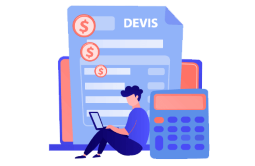Ios vs Android? 5 Reasons Why you Should Choose Android

Introduction:
-
If you're in the market for a new smartphone and trying to decide between iOS and Android, you may be wondering which operating system is the best fit for you. While both iOS and Android have their strengths and weaknesses, there are several compelling reasons why you might want to choose Android.
In this blog post, we will explore five reasons why you should consider choosing Android over iOS. From customization to affordability, Google services, multitasking, and open-source capabilities, we will dive into each reason and explain how it can benefit you as an Android user. By the end of this post, you should have a better understanding of why Android may be the right choice for you.
Requirements:
- Android OS
-
Steps to follow :
The type of screen you choose for your computer will depend on your specific needs and preferences. Here are some factors to consider:
-
Customization: Android allows for a high level of customization. You can change the look and feel of your Android device by installing different launchers, changing the icon pack, and using widgets. You can also access the file system and install apps from outside the Google Play Store.

-
Affordability: Android devices are available at a wide range of price points, from budget phones to high-end premium devices. This means that you can find an Android device that fits your budget and needs.

-
Google Services: Android is developed by Google, and as a result, it has seamless integration with Google services like Google Search, Google Maps, and Google Assistant. This can be particularly beneficial if you are already heavily invested in the Google ecosystem.

-
Multitasking: Android devices offer more robust multitasking capabilities than iOS devices. You can have multiple apps open and running at the same time, and you can easily switch between them.

-
Open Source: Android is an open-source operating system, which means that developers can modify and customize it to suit their needs. This has led to a vast ecosystem of apps and custom ROMs, which can provide additional functionality and features that are not available on iOS.

-

